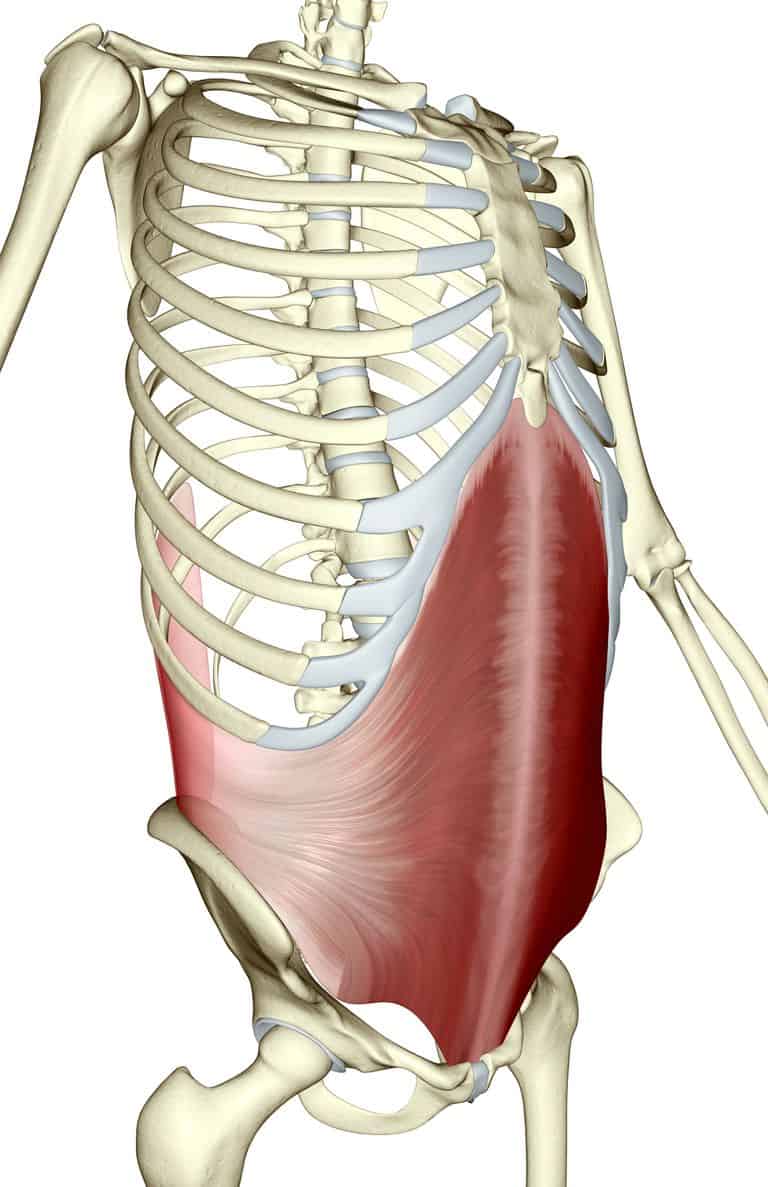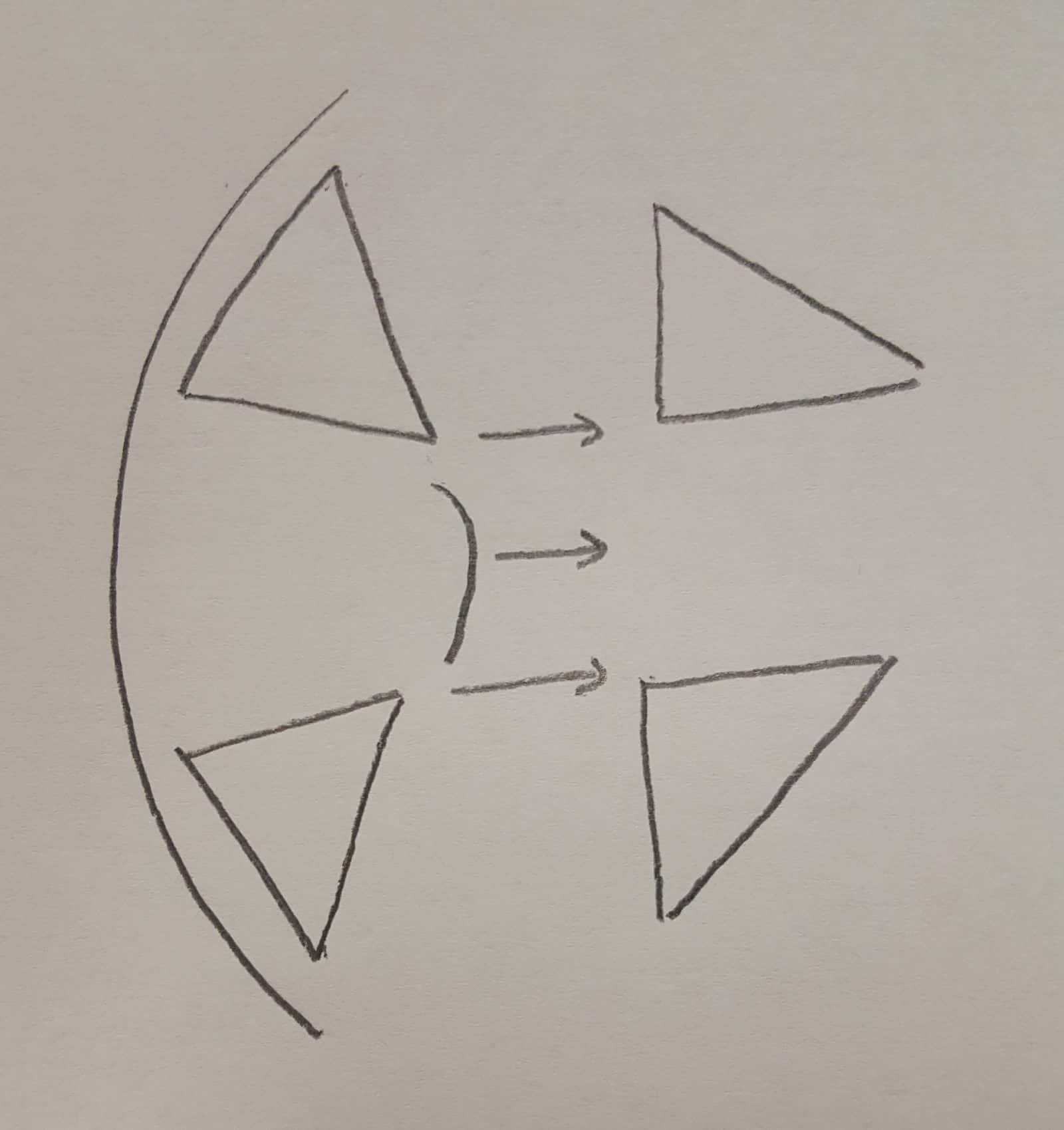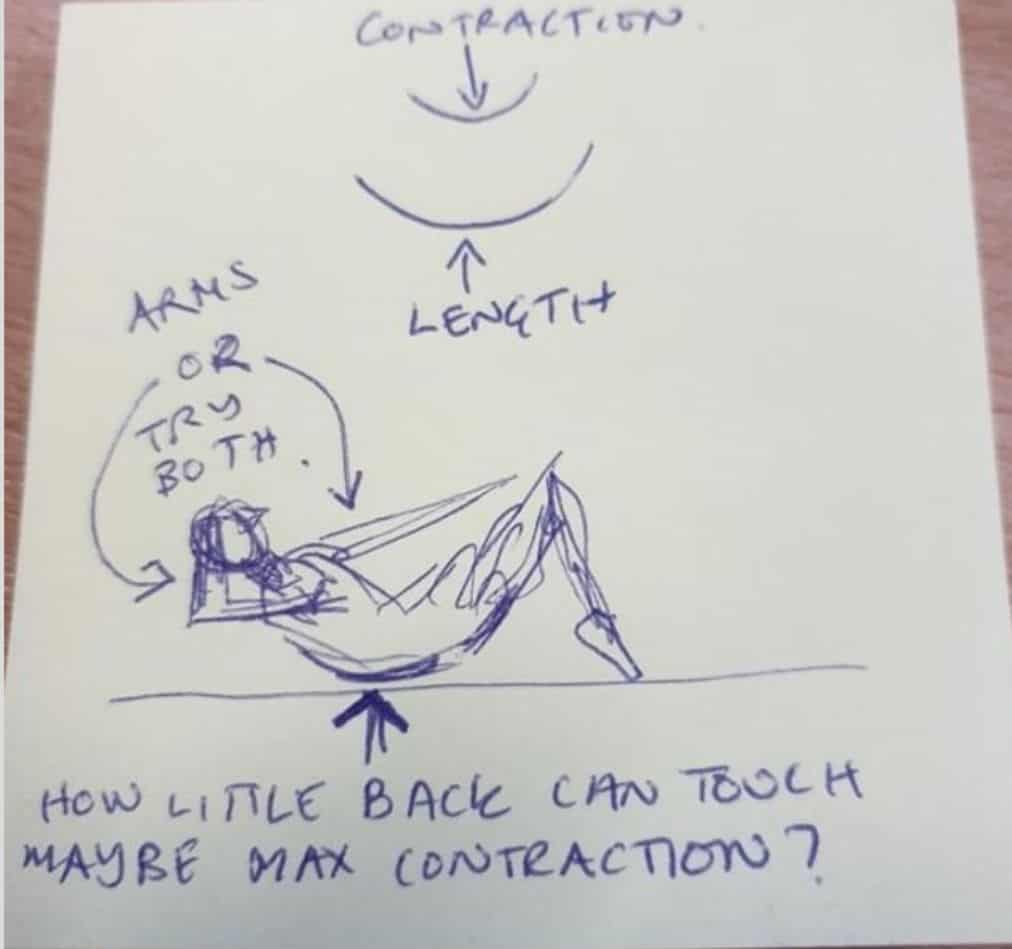
Utilizing the Sweet Spot
As I am learning to access and mobilize my ribs, I have begun to understand and control the deep inner workings of my trunk, particularly the space between the ribs and pelvis. One might think of this as the shortest chain in the body, and also the most medial. It functions as the intended starting point between flexion and extension, though for most, rarely acts as such. We tend to be distal to proximal movers, engaging with load or tension through our limbs before the trunk. Reversing this pattern, and initiating movement through what I call the sweet spot, makes just about any movement considerably easier.
Creating space between the ribs and hips is often programmed as a contraction of the mid to low back in extension. A shortening takes place. Abs, in our mind, are used for flexion. It is a familiar pattern. To learn to use them to open the area instead of close, we can take the tension of the known and manipulate it to enter actions of the unknown:
Note how the low back does not rise off the floor as the rib points pull away from the waist band.
Posturally, rounded shoulders and a posterior tilted pelvis bring the frontal points of the ribs and pelvis toward each other. Pushing the belly out/ forward helps straighten these lines and makes the bowls of each more parallel to each other.

Pressing the stomach into the ground when lying prone is similar. It avoids the common practice of shortening through the back to open the front, and engages the abs which can then create the desired length:
The goal is to have minimal compression through the spine and keep relatively the same spacing throughout.

We don’t want the slinky coils to touch to make shapes. If not forced, it won’t.
Likewise, maneuvering the ends of the spine should be able to bow the middle. The unease in which my neck can load in extension forces my thoracic to shoot up and assist the movement. The second attempt goes a bit smoother, but it is not until I flex the ribs and pelvis and then take them into extension that the middle can rise up as an effect extending the ends.
A timely visual sent to me via instagram further illustrates this concept:

Leading with expansion in the area has completely transformed the feeling and performance of deadlifts. How often were we told to lead with the hips when our true, held point of extension was slightly higher, in our actual middle?
Comparing pelvic and thoracic folding versus keeping steady with an open abdomen. Power based olympic lifting — acts of explosive extension — also follow this rule. So many poor repetitions have stemmed from my shoulder and/or hip sockets.
Minimal tension used to hold the structure together allows free mobility everywhere else. A stable middle joining top and bottom halves free up the limbs to reach, press, and pull into greater range:
Without the need for excess stabilizing forces, we can expand both our amplitude of strength and our strength endurance.



